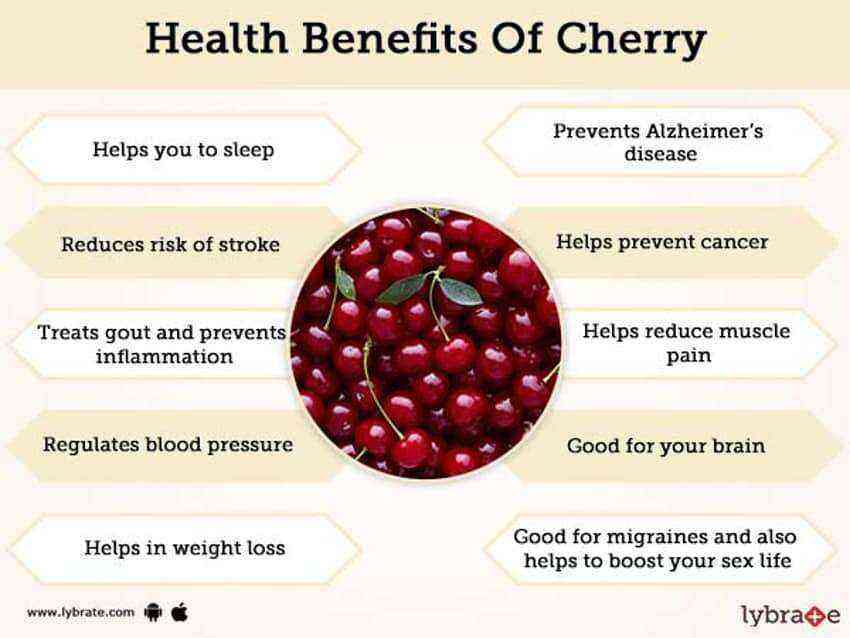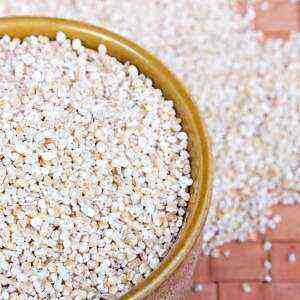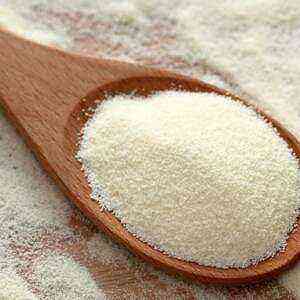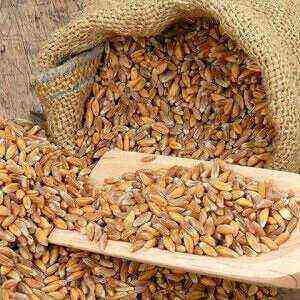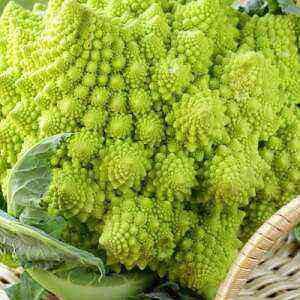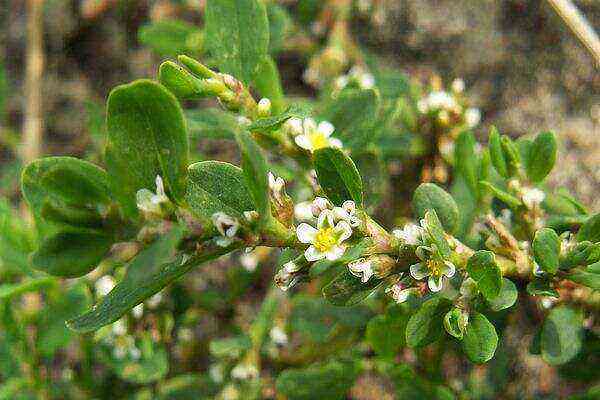
Currently, the Swiss company “Nestlé” purchases more than 420 tons of palm oil annually for the manufacture of food products. Disputes about its benefits and harms do not subside until now. The abundance of unsaturated fats, carotenoids, powerful antioxidants have a healing effect on the human body. They reduce the likelihood of cancer, provide energy production, participate in the structuring of bones, the production of visual pigment in the retina, and are beneficial for joints and skin. The harm to the product is due to the high content of saturated fats, which are processed and remain in the form of toxins. These refractory substances stick to the intestines and are deposited on the walls of blood vessels, increasing the risk of developing diseases of the heart and great vessels.
Varieties
The following types of oils are extracted from the fruits of oil palm: raw palm, palm kernel. This is the most common and cheapest product among vegetable fats. Because of this, it is widely used in food production.
Currently, oil palm is cultivated in South America, West Africa, Indonesia, Malaysia and Southeast Asia.
Crude oil is obtained by processing the pulp of the fruit, which contains up to 70% fat. Only the product that has gone through several stages of refining is suitable for food. Otherwise, crude oil is used only for technical purposes – for the manufacture of candles, soap and lubrication of spare parts.
Production principle
The plantations are collecting fruits that are transported to the plant for further processing. Collected clusters are treated with dry hot steam to separate them. After that, the fruit pulp is pre-sterilized, then pressed. The resulting raw material is heated to 100 degrees and placed in a centrifuge to separate liquids and impurities.

- elimination of mechanical impurities;
- hydration (extraction of phospholipids);
- neutralization (removal of free fatty acids);
- whitening;
- deodorization.
Palm kernel oil is a product obtained by extraction or pressing of kernels from seeds. The degree of its digestibility is 97%.
Varieties of palm oil used in the food industry:
- Standard. It melts at a temperature of 36-39 degrees. Scope of application: baking and frying. In the process of cooking does not create smoke and burning. Products prepared with standard palm oil should be consumed in the form of heat. Otherwise, the dish will harden and become covered with an unaesthetic film.
- Olein. The melting point of the product is 16-24 degrees. Used for roasting meat and dough. It has the consistency of the cream. Widely used in the cosmetic industry.
- Stearin. It has the highest melting point among the three varieties of oil. It is 48-52 degrees. It is the hardest fraction of palm oil. Industries of application: cosmetology, metallurgy, food industry. Included in the margarine.
A distinctive feature of palm oil from other vegetable oils is a solid consistency. The longer a product is stored, the higher its melting point becomes. So, in fresh palm oil it is 27 degrees. And for a product with a week durability it increases to 42 degrees.
The oil is a source of fat-soluble vitamins A, E, K. The just-made palm product has a light orange color due to its high beta-carotene content. The food industry uses exclusively bleached oil. To do this, it is heated in an oven to 200 degrees, cooled. Under the influence of ultraviolet and oxygen, the natural dye beta-carotene is destroyed, as a result, palm oil is discolored, partially loses its value.
Chemical composition
100 kcal is concentrated in 884 ml of palm oil, with 99,7 g of fat and 0,1 g of water. The chemical composition of the product is represented by vitamins E (33,1 mg), A (30 mg), B4 (0,3 , 0,008 mg), K (2 mg) and phosphorus (100 mg). Sterols account for 10 mg. In addition, traces of lecithin, phytosterols, squalene, and coenzyme QXNUMX were found.
According to the research results, it was found that the oil contains palmitic acid, which enhances the natural production of cholesterol. As a result, the human body begins to intensively synthesize an organic compound in an uncontrolled amount, which in turn increases the risk of vascular and heart pathology.
The fatty composition of palm oil
Components
Content in 100 grams of product, grams
Saturated fatty acids
Лауриновая
42,5
Миристиновая
11,9
Стеариновая
7,4
Пальмитиновая
6,3
Каприновая
3,8
Каприловая
3,3
Арахиновая
1,1
Monounsaturated fatty acids
Oleic 14,0 Palmitoleic 0,5
Polyunsaturated fatty acids
Linoleic 2,4
The World Health Organization strongly recommends reducing fatty acid intake. Palm and butter, chocolate, lard, cream, meat, eggs are also considered dangerous foods. According to the European Food Safety Authority (EFSA), the maximum permissible level of fatty acid consumption is 10% of human energy consumption, including alcohol. In other words, with a caloric content of oil of 884 kcal per 100 ml and a content of 44% palmitic acid in it, a safe daily dose of squeezed palm fruit is 10 ml, provided that there are no other sources of fatty acids in the diet.
Influence on the body of infants

In addition to lowering calcium absorption, the excretion of fat in the stool increases. It becomes denser and constipation develops.
Violation of the absorption of macronutrient is due to the special location of palmitic acid relative to the palm olein fat molecule. Under normal conditions, it is in the lateral position. After starting the process of digestion of baby food in the intestines, it is cleaved, linking calcium in a free state. As a result, insoluble salts are formed: calcium palmitate. In fact, this soap, which is not absorbed in the digestive tract, and transit are removed with a chair.
To avoid blocking the absorption of the mineral, the position of palmitic acid is artificially altered in olein. This product is called beta-palmitate. As a result, the structured oil with palmitic acid does not break down, does not form soaps with calcium and is absorbed in the gastrointestinal tract unchanged.
Myths or Reality
Palm oil is a product that causes a lot of controversy and misconceptions about its benefits and harms. Some argue that this is a natural source of tocopherols, beta-carotene, others insist that it is transformed into plasticine in the human body and interferes with intestinal permeability. In addition, there is an opinion that the raw materials for the production of oil are transported in oil tankers, as a result, it poses a threat to human health and causes cancer.
Consider the main guesses about oil and fat products, and whether they have a reasonable basis for existence.
Myth # 1 “Palm oil contains dangerous trans fats.”
It is not true. These compounds are not part of the product. What is the danger of trans fats? They replace useful fatty acids at the molecular level from cell membranes, disrupting cell nutrition and blocking enzymes. As a result, metabolic reactions slow down, which leads to the development of chronic diseases of the endocrine, digestive, cardiovascular, genitourinary systems.
Myth number 2 “For the production of industrial palm oil is used, brought in tanks from under the oil products from Indonesia and Malaysia.

Shipping stories are nothing more than fiction of competitors. For the transportation of palm oil, specially equipped tanks are used that meet all safety requirements. Before loading the raw materials, tank containers are thoroughly cleaned (steamed, washed, dried) from the remnants of the previous product. In addition, it is prohibited to transport palm oil in containers where previously non-food, toxic cargoes were located. Transportation of products is controlled by international organizations.
Myth number 3 “Palm oil is not valuable to the human body”
Incorrect statement. It is a source of coenzyme Q10, carotenoids, tocotrienols, tocopherols, polyunsaturated fatty acids (omega-3,6), vitamins B4, F.
In the process of choosing oils for food purposes, remember that refined and deodorized products are free from impurities and partially devoid of useful substances. Therefore, preference is recommended to give unrefined species. Such oils should not be subjected to heat treatment, they are best used as a food additive to salads. These products include red palm oil. It fully preserves all the useful properties listed above.
Myth number 4 “Palm oil is extracted from the trunk of a palm tree”
This is a misconception. The product is obtained exclusively from the fruit of the oil palm by squeezing it from the nucleolus or pulp. The main feature is a solid consistency from nature. Interestingly, the farther south the tree grows, the more saturated fatty acids are contained in the fruits, and the farther north, the more PUFAs. Because of this, the oil obtained in the southern tropical countries has a solid structure. This property of the product provides the desired shape for finished food and confectionery products.
Myth number 5 “Palm oil, getting into the stomach, behaves like plasticine – it does not melt, but is a sticky mass that clogs the body from the inside.”
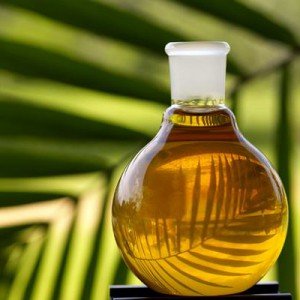
Myth number 6 “Manufacturers prefer palm oil because of the cheapness of raw materials”
Indeed it is true. The cheapness of the oil is due to the high productivity of the plantations of the main suppliers of raw materials (Indonesia and Malaysia). In addition, it is very technologically. The solid structure of the product makes it attractive for use in the food industry (confectionery and bakery). Previously, liquid oils were used that were subjected to hydrogenation for compaction and hardening. As a result, they accumulated dangerous trans fats and brought harm to the body. A modern alternative to them is palm oil. It is safe and naturally from nature.
Myth number 7 “Food products with palm oil in developed countries is prohibited”
It is not true. There is no ban on palm oil in any country. Moreover, he owns 58% of the consumption of vegetable fats on the world market.
Danger to health
Palm oil is an integral component of biscuits, candy, chips, cheese, ice cream, french fries. At present, it is difficult to find a product without this ingredient. However, the “fascination” overseas fat poses a risk to human health.
Harm of palm oil.
Deposited in fat as fast as possible

Provokes type II diabetes
Palmitic acid, which is part of the product, promotes the deposition of fat in internal organs and tissues. Including the pancreas, which contributes to the disruption of adequate insulin synthesis.
Addictive
Fatty acids “beat” in the brain, as a result, the body’s susceptibility to hormones that report satiety (insulin and leptin) decreases. Thus, he does not give the signal to stop eating. Palmitic acid inhibits the ability of insulin and leptin to activate, which explains the dependence of a person on fatty foods.
Harm the liver
Palmitic acid is not completely eliminated from the human body. Accumulating in the pancreas, thymus, liver and skeletal muscles, it replaces healthy organ cells with fatty ones. In addition, the ceramides that are part of palmitic acid provoke the degradation of nerve cells and the occurrence of Alzheimer’s disease.
Increases “bad” cholesterol from low density lipoprotein
With the regular intake of these compounds from the outside, they turn into biological “garbage” in the circulatory system. As a result, the body’s immune cells regard them as foreign bodies, which increases the risk of atherosclerotic plaques forming in the vessels and the formation of blood clots.
Palm oil should not be consumed by people over 50 years old, children under 18 years old, people with digestive tract ailments in the acute phase, osteopathy and osteoporosis, heart disease.
Remember, with regular intake of the product, fatty acids begin to accumulate in the biomembranes of cells. As a result, their transport functions are disrupted, which can contribute to sexual dysfunction, the development of vascular and heart diseases. The most dangerous combination of palm oil with carbohydrates, which leads to obesity and atherosclerosis.
Useful Properties
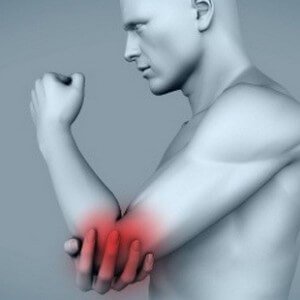
Characteristics of palm oil: reddish-reddish color, solid texture, resistance to oxidation. The natural product exhibits pronounced antibacterial and wound-healing properties, prevents the occurrence of inflammatory reactions.
Palm oil health benefits:
- Fights free radicals. It is the strongest antioxidant rich in carotenoids. Improves the condition of hair and skin. Extends youth, reduces the likelihood of developing cancer. In addition, antioxidants resist wilting of the skin, slowing down age-related changes in the body.
- Provides the body with energy due to the high content of fat, struggling with fatigue syndrome, psycho-emotional disorders, improves memory, attention and mental abilities.
- Reduces the risk of vascular obstruction and the development of heart failure, stroke, heart attack, hypertension, atherosclerosis, coronary heart disease.
- Improves the work of the analyzer of vision (due to provitamin A), makes it possible to produce pigment located in the retina and responsible for the visibility of the eye. Normalizes intraocular pressure, protects the cornea and lens, improves blood flow to the visual organ. Used for the prevention and treatment of “night blindness”, glaucoma, conjunctivitis, tired eye syndrome.
- Prevents inflammation of the digestive system, stimulates the secretion of bile, accelerates the healing of erosions on the mucous membrane of the stomach, intestines. It is recommended for use by people suffering from colitis, gastritis, ulcers, cholecystitis, gallstone disease.
- Regulates hormonal levels in women, maintains normal estrogen levels, relieves inflammation of the ovaries, breasts, uterus (vitamins A, E). It is used to relieve the symptoms of premenstrual syndrome, menopause. For medicinal purposes, a tampon with palm oil is inserted into the vagina to eliminate cervical erosion, vaginitis, colpitis.
PUFAs that make up the oil are involved in the structuring of the skeletal system, increase joint mobility.
With regular use of natural red palm oil, starting from the age of 30, you can avoid osteoporosis, which in 60% of cases develops in women during menopause, and diseases of the musculoskeletal system. Otherwise, a restructuring of the bone structure is observed, it becomes thinner, calcium is washed out, the mineral strength of the skeleton is lost, and fractures occur with minor loads. The main danger of osteoporosis is a slow but progressive course, which as a result leads to vertebral injury, disability and even death among the elderly.
Application in folk medicine

Health Recipes:
- When skin lesions (from burns, cuts). Palm oil applied to the problem area twice a day for 14 days.
- To relieve inflammation in the oral cavity and treat periodontal disease. Soak a sterile gauze cloth in oil, attach to the gums. Therapy is carried out within 2 weeks.
- From cracks in the nipples. To heal wounds during breastfeeding, palm oil is heated in a water bath (for the purpose of disinfection), and the nipples are lubricated with it every time the baby is applied to the breast. The procedure is repeated until the healing of cracks.
- From cervical erosion. From a sterile gauze napkin or cotton wool to form a tampon, soak in the heated palm oil, enter vaginally. The course of treatment is 10 days. The procedure is carried out a day after consultation with the doctor.
- For the treatment of lichen, eczema, psoriasis. Ingredients: walnut oil (20 ml) and from the fruits of red palm (80 ml), birch tar (3 g). Ingredients combine, mix. Apply ointment 2 once a day for 2 weeks.
- In diseases of the joints. To relieve gout pain, problem areas are massaged by rubbing in a healing compound. Ingredients ointment: 15 ml of palm, 25 ml of stone grape, 5 drops of lemon and pine, 10 drops of lavender oil. To relieve pain in arthritis, the joints are ground using the following composition: 5 drops of pine essential oil, 3 drops of lemon and lavender, 15 ml of olive and palm.
The greatest value for the human body is provided by the first cold pressed oil. It is characterized by a rich fatty acid composition and a low degree of oxidation. For eating and preparing medical recipes for external use, it is recommended to give preference to red palm oil with a maximum content of beta-carotene, which is 15 times higher than that of this substance in carrots.
Used in cosmetics
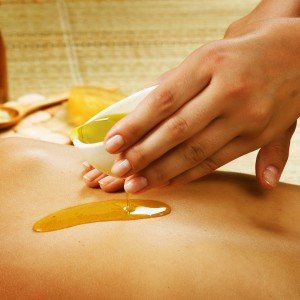
Use in home cosmetology:
- To moisturize the face. Palm oil mixed in the proportion of 1: 1 with olive oil, apply to the wet skin with patting movements. Apply the composition in courses for 2 weeks with an 10-day break.
- To rejuvenate the dermis. Mix in equal proportion of palm and apricot oils, apply on washed skin in the evening, for a quarter of an hour. Do not remove excess napkin, leave until completely absorbed. The procedure is carried out regularly for 14 days.
- To nourish hair. Apply the oil on the scalp and wet curls, leave for 1,5 hours, rinse thoroughly. The procedure is repeated twice a month. Remember, palm oil is poorly washed off the hair, so make a mask before shampooing.
- To relax the body. Oil massage normalizes sleep, soothes, improves blood circulation, smoothes wrinkles.
- To eliminate cellulite, geranium oil (7 drops) is mixed with palm (15 ml), olive (5 ml), lemon and dill (5 drops), the mixture is rubbed into the problem areas twice a day. In addition, during the period of fighting with orange peel, it is important to exercise, adhere to proper nutrition and drink more 2 l of water per day.
- For smoothing postoperative scars. Ingredients: clove, mint (2 drops), lavender, rosemary (4 drops) and palm oils (15 ml). Apply 1-2 once a day to an uneven area for 10 days, then take a break for a week for 1-2, resume the procedure.
Palm oil is a product that has a wide range of effects on the human body. It is used externally for body shaping, improving the condition of the skin and hair, relaxing the body, relieving joint pain, healing cracks and wounds. And inside to fortify the body with antioxidants A and E, lecithin and coenzyme Q10.
Conclusion
Palm oil is a useful and very expensive product until the multi-level purification of raw materials. After the strongest treatment, it oxidizes, loses its nutritional value for the human body. Do not compromise the health of loved ones. Enter in the diet only red palm oil (maximum 10 ml per day), not subjected to heat treatment. Otherwise, palmitic acid, which is part of the product, impairs bone mineralization in children, disrupts metabolic processes, causes intoxication of the body, impairs brain, liver, and causes diabetes and obesity.
It is recommended to minimize or completely abandon the consumption of palm oil, which is included in fast food products (chips, french fries, fast foods, cheeseburgers), processed cheeses, yoghurts, infant formula and confectionery. As part of this food is the strongest carcinogen, dangerous to human health. In addition, children and adolescents up to 18 years, as well as people after 50 years, should eat products without palm oil, otherwise there may be problems with calcium-phosphorus metabolism.
In order not to fall into the “trap” of manufacturers, carefully read the label of the purchased goods. Refuse to purchase products that contain only butter by production technology, but it is replaced with palm or stearin. These include: cheese, ice cream, condensed milk, cream, cakes, cakes, biscuits, sweets.
Sources of
- N. Ivanova: The healing power of palm oil
